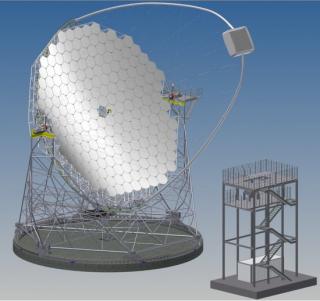
This Friday, October 9th at five o’clock in the afternoon, the ceremony of the stone laying for the biggest Cherenkov telescope in the northern hemisphere, the prototype of the LST (Large Size Telescope) with a diameter of 23 metres, will take place at the Roque de los Muchachos Observatory (ORM) on the island of La Palma. Takaaki Kajita, newly awarded the Nobel Prize for Physics, will be present at the event.
Advertised on